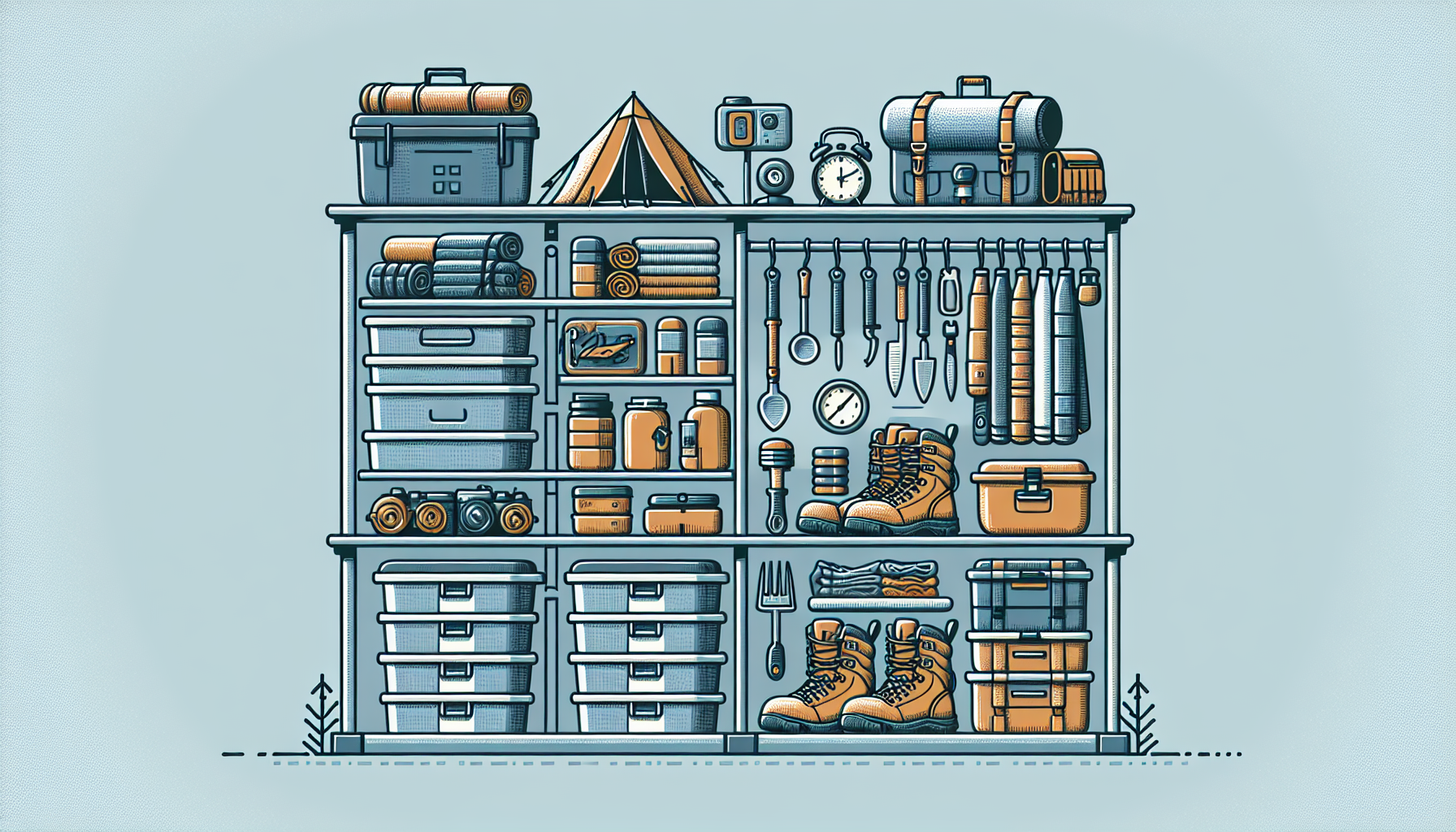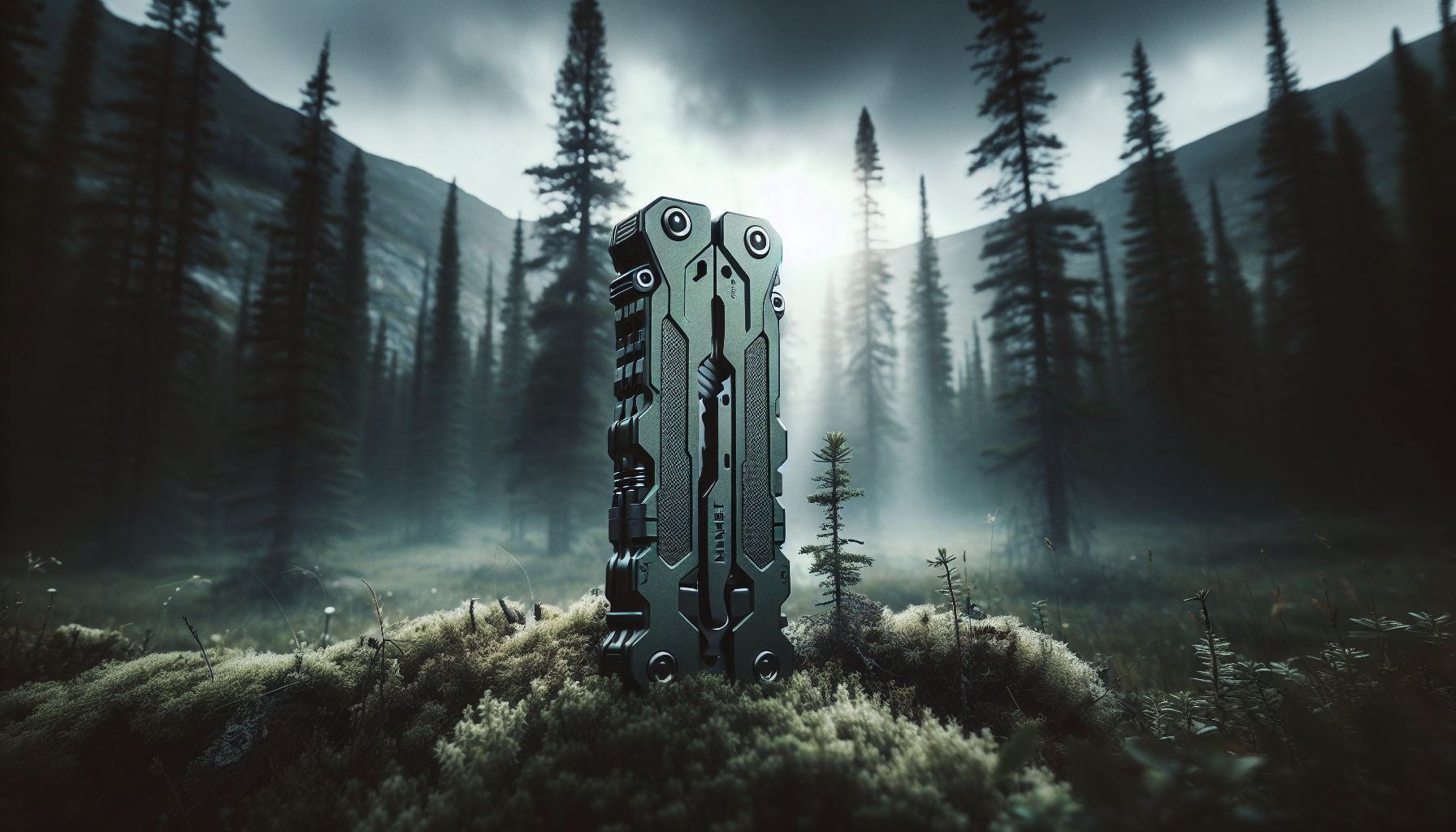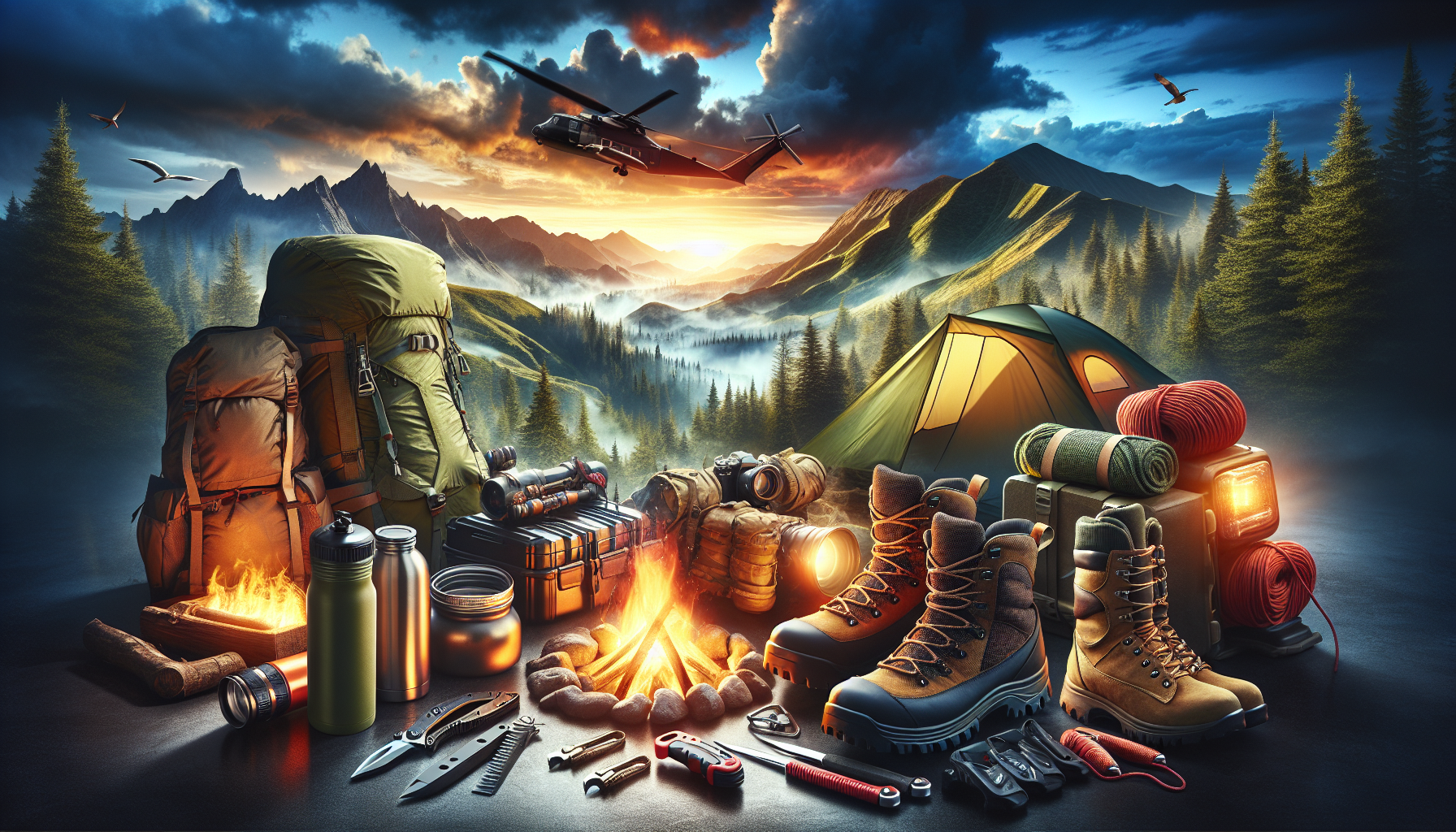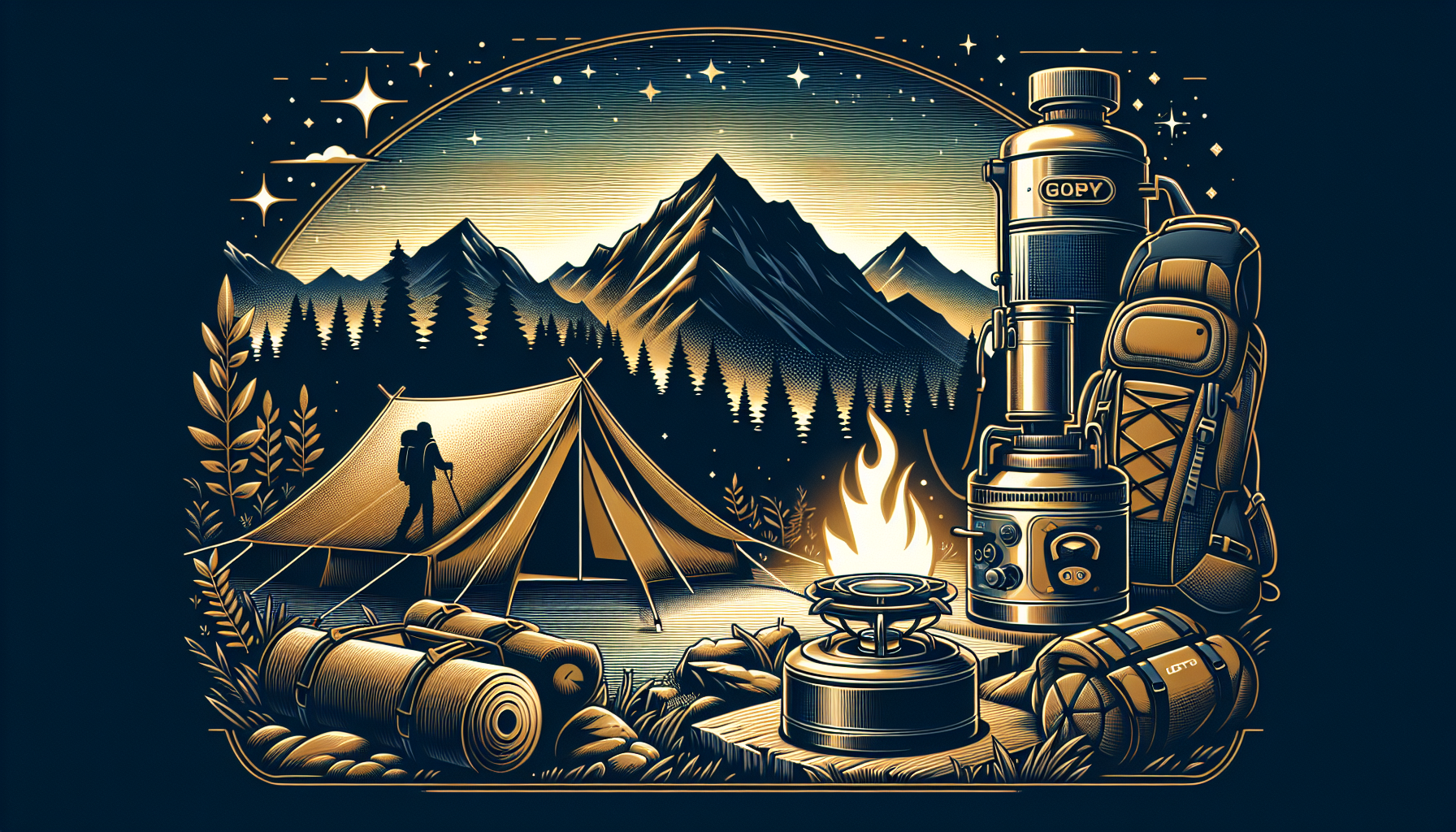The Best Ways To Store And Organize Your Camping Gear
Whether you’re a seasoned adventurer or just starting to explore the great outdoors, keeping your camping gear stored and organized is essential for a successful trip. From tents and sleeping bags to cooking utensils and hiking boots, having a system in place ensures that everything is easily accessible when you need it. In this article, we will explore some of the best ways to store and organize your camping gear, providing you with tips and tricks to maximize space and keep your equipment in top condition. Say goodbye to rummaging through chaotic piles of gear and hello to a well-organized camping experience!
Organize Your Camping Gear
Considerations for Storing Camping Gear
When it comes to storing camping gear, there are a few considerations you need to keep in mind. The first step is to assess your storage space. Whether you have a garage, shed, or a designated storage area in your home, it’s important to take stock of the available space and determine how much gear you have to store.
Once you know the size of your storage space, you can then choose the right storage containers. Opt for durable containers that are both waterproof and airtight to keep your gear protected from the elements. Additionally, consider the size and shape of the containers to ensure they fit in your storage space efficiently.
To make it easier to locate your camping gear when you need it, label each container and create an inventory of your gear. This will save you time and effort in the long run, especially when you’re preparing for your next camping trip and need to find specific items quickly.
Storing Camping Gear by Category
To organize your camping gear, it’s helpful to store items by category. This makes it easier to find what you need when you’re on your next adventure. Let’s take a look at some common categories for camping gear storage.
Sleeping Gear
Your sleeping gear, such as sleeping bags, aifr mattresses, and pillows, should be stored together in a designated area. Consider using compression sacks or vacuum-sealed bags to minimize their size and make them easier to store.
Cooking Equipment
Your cooking equipment, including pots, pans, and utensils, should also have their own designated storage area. Keep everything together in a sturdy container and consider using dividers or small storage bins to keep items organized.
Clothing and Personal Items
Clothing and personal items should be stored separately from your gear. Use a waterproof storage container or duffel bag to keep your clothes dry and protected. Consider using packing cubes or compression bags to maximize space and keep your clothing organized.
Lighting and Power Sources
Lighting and power sources, such as lanterns and batteries, should be stored together in a designated area. Consider using a clear plastic container or storage bag so you can easily see what items you have.
Tools and Repair Materials
Your tools and repair materials should be stored together in a toolbox or a designated storage container. Make sure to include items like duct tape, zip ties, and a multi-tool for any necessary repairs while you’re on your camping trip.
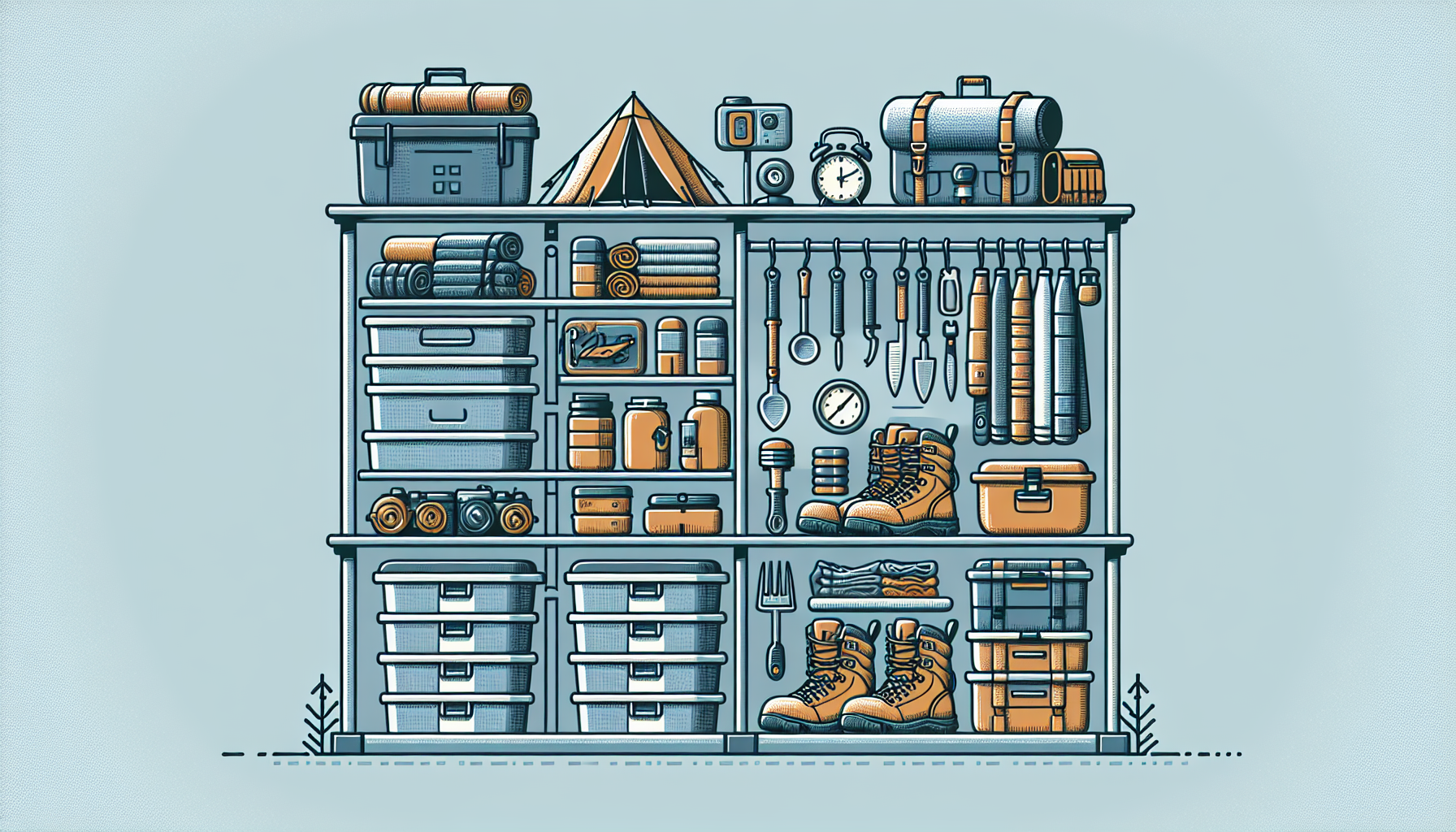
Storing Camping Gear for Different Seasons
Storing your camping gear appropriately for different seasons is crucial to prolonging its lifespan. Let’s take a look at how to store gear for both summer and winter.
Summer Gear Storage
When storing gear for the summer, make sure to thoroughly clean and dry each item before putting it away. This will help prevent mold and mildew from forming during storage. Store items in a cool, dry place to further protect them from humidity and heat.
Winter Gear Storage
When preparing to store your gear for the winter, pay extra attention to your tent. Make sure it’s completely dry and clean before packing it away. Consider storing your tent in a breathable storage bag to prevent moisture buildup. For other winter gear, such as snowshoes or insulated clothing, store them in a dry and insulated area to protect them from extreme cold temperatures.
Tips for Organizing Camping Gear
Organizing your camping gear is key to a stress-free camping experience. Here are some helpful tips to keep everything in order:
Create a Gear Checklist
Before and after each camping trip, create a gear checklist. This will help you keep track of what you have and ensure that you don’t forget any essential items. Update the checklist as necessary and keep it with your camping gear for easy reference.
Utilize Storage Solutions for Small Items
Small items, such as matches, first aid kits, and camping accessories, can easily become misplaced. Utilize small storage solutions, like plastic bins or zippered pouches, to keep these items organized and easily accessible.
Prioritize Easy Access Items
When packing and storing your gear, consider what items you will need to access frequently. Keep these items near the front or on top of your storage containers for easy access. This may include your cooking equipment, toiletries, or necessary camping accessories.
Keep Cleaning and Maintenance Supplies Handy
To ensure the longevity of your gear, keep cleaning and maintenance supplies within reach. This may include a small broom to sweep out your tent, a sponge for cleaning cookware, and lubricants for any moving parts on your camping equipment.
Utilize Vertical Space
If storage space is limited, make the most of your available vertical space. Install hooks or shelving units on the walls of your storage area to hang or stack gear. This will help maximize the space you have available.
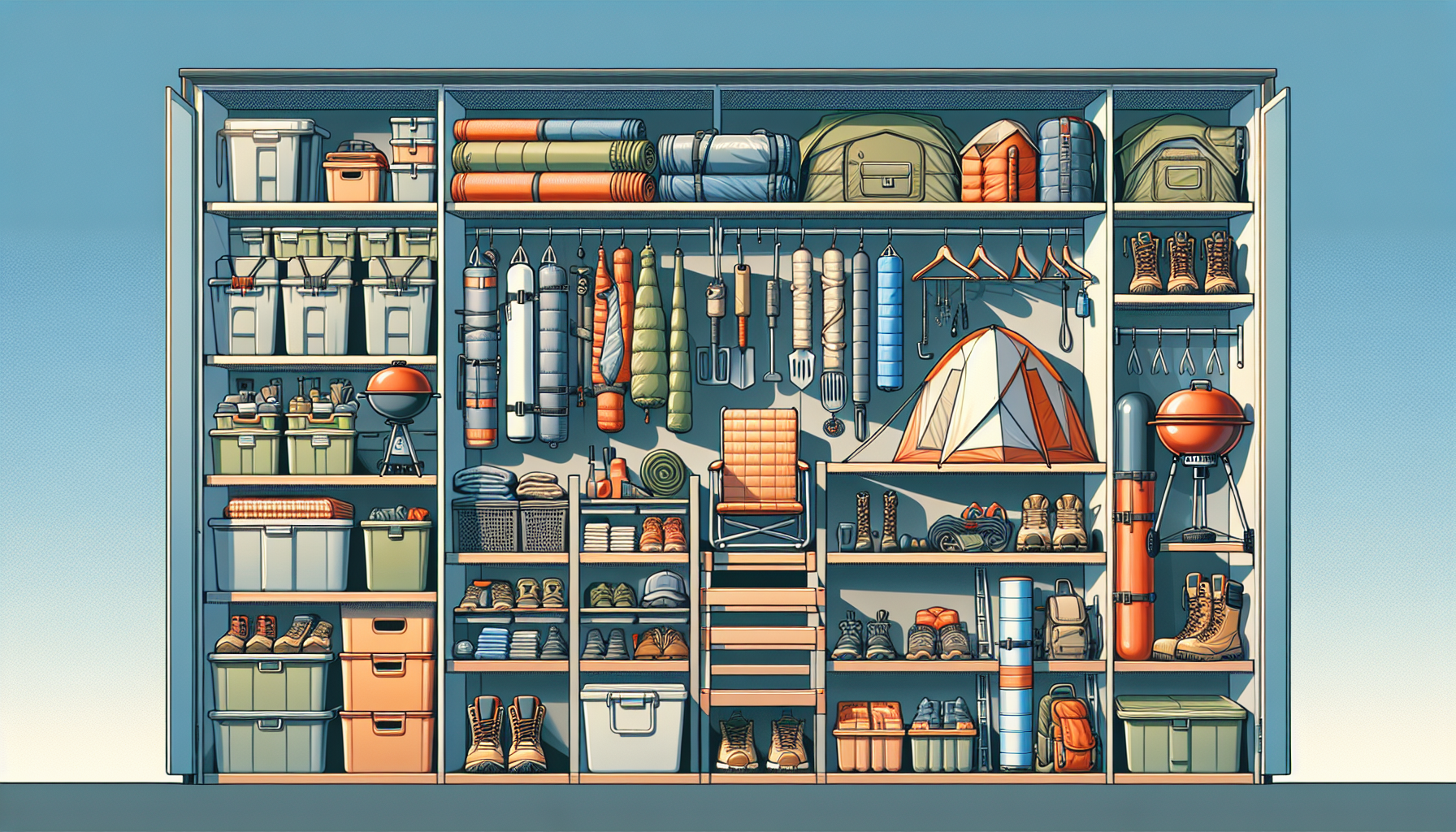
Maintaining and Inspecting Camping Gear
Regular maintenance and inspection of your camping gear is essential to keep it in good condition. Here are some important steps to take:
Regular Cleaning and Drying
After each camping trip, take the time to clean and dry your gear thoroughly. This includes wiping down your tent, rinsing and drying cookware, and laundering any camping clothing or equipment that is machine washable. Proper cleaning and drying prevent the growth of mold and mildew.
Inspecting and Replacing Damaged Gear
Regularly inspect your gear for any signs of damage or wear. Pay particular attention to items like tents, sleeping bags, and camping furniture. If you notice any tears, broken zippers, or other issues, make the necessary repairs or consider replacing the item to ensure your safety and comfort on future camping trips.
Storing and Organizing Camping Gear in Your Vehicle
If you plan on transporting your camping gear in your vehicle, it’s crucial to store and organize it properly. Here are some tips for doing so:
Roof Rack and Storage Bags
If you have a roof rack on your vehicle, consider using storage bags specifically designed for this purpose. These bags are waterproof and secure, allowing you to easily transport larger items like tents or camping chairs on the roof of your vehicle.
Trunk Organization Systems
For smaller vehicles or when you need easy access to your gear, invest in trunk organization systems. These can include collapsible storage containers, cargo nets, or even a designated trunk organizer. These systems help keep your gear secure and prevent it from shifting during transit.
Seatback Organizers
If you have limited trunk space, utilize seatback organizers to store smaller camping items. These organizers attach to the back of your seats and provide pockets and compartments for easy storage of gear like maps, flashlights, or snacks.
Storing and Organizing Camping Gear at Home
When storing your camping gear at home, you want to ensure it is easily accessible and protected from the elements. Here are some storage solutions for different spaces in your home:
Garage and Shed Storage Solutions
If you have a garage or shed, utilize wall-mounted or overhead storage solutions. Install hooks or racks to hang larger items like camping chairs or bikes. Consider using shelves or cabinets for smaller gear and accessories. Make sure to keep the area clean and free of pests to protect your gear.
Wall and Ceiling Hooks
In smaller spaces, such as apartments or closets, make use of wall and ceiling hooks. Hang items like backpacks, lanterns, or camping pots for easy access and to save valuable floor space.
Storage Cabinets and Shelving Units
For those with ample indoor storage space, invest in storage cabinets and shelving units. These can be used to store larger gear like tents, sleeping bags, and camping furniture. Utilize storage containers within these cabinets or on the shelves to keep everything organized and protected from dust or pests.
Protecting Camping Gear from Pests and Weather
To ensure the longevity of your camping gear, it’s important to protect it from both pests and weather elements. Here are some tips to consider:
Pest Prevention Methods
To ward off pests, like mice or insects, store your gear in containers that are airtight and pest-resistant. Use cedar chips or lavender sachets to further prevent pests from invading your storage space. Regularly inspect your gear for any signs of damage or infestation.
Waterproofing Techniques
To protect your gear from weather-related damage, invest in waterproofing solutions. Treat your tent with a waterproofing spray and consider using waterproof bags or containers for other gear. Additionally, ensure that your storage area is dry and well-ventilated to prevent moisture buildup.
Preparing for Future Camping Trips
After each camping trip, take the time to clean, organize, and restock your gear. Here are some steps to help you prepare for future adventures:
Post-Trip Cleaning and Reorganization
Clean and dry your gear thoroughly after each camping trip to prevent mold and mildew. Organize your gear back into its designated storage areas, making note of any items that may need repair or replacement. This way, your gear will be ready and in good condition for your next camping trip.
Restocking and Refreshing Supplies
Take inventory of your camping supplies and restock any items that are running low. This may include things like fuel for your stove, portable water containers, or camping toiletries. Having all your supplies fully stocked will ensure a smooth and hassle-free camping experience.
Conclusion
Storing and organizing your camping gear properly is essential for maintaining its longevity and making your camping trips more enjoyable. By assessing your storage space, choosing the right storage containers, and labeling and inventorying your gear, you can easily find what you need when you need it. Storing gear by category, considering the seasons, and utilizing organizational tips will help keep everything in order. Don’t forget to regularly inspect and maintain your gear, protect it from pests and weather, and prepare for future trips by cleaning, reorganizing, and restocking supplies. With these best practices in mind, you’ll be well-equipped and well-prepared for all your camping adventures.
You can also check Best Ways To Waterproof Your Tactical Boots For All-weather Use

